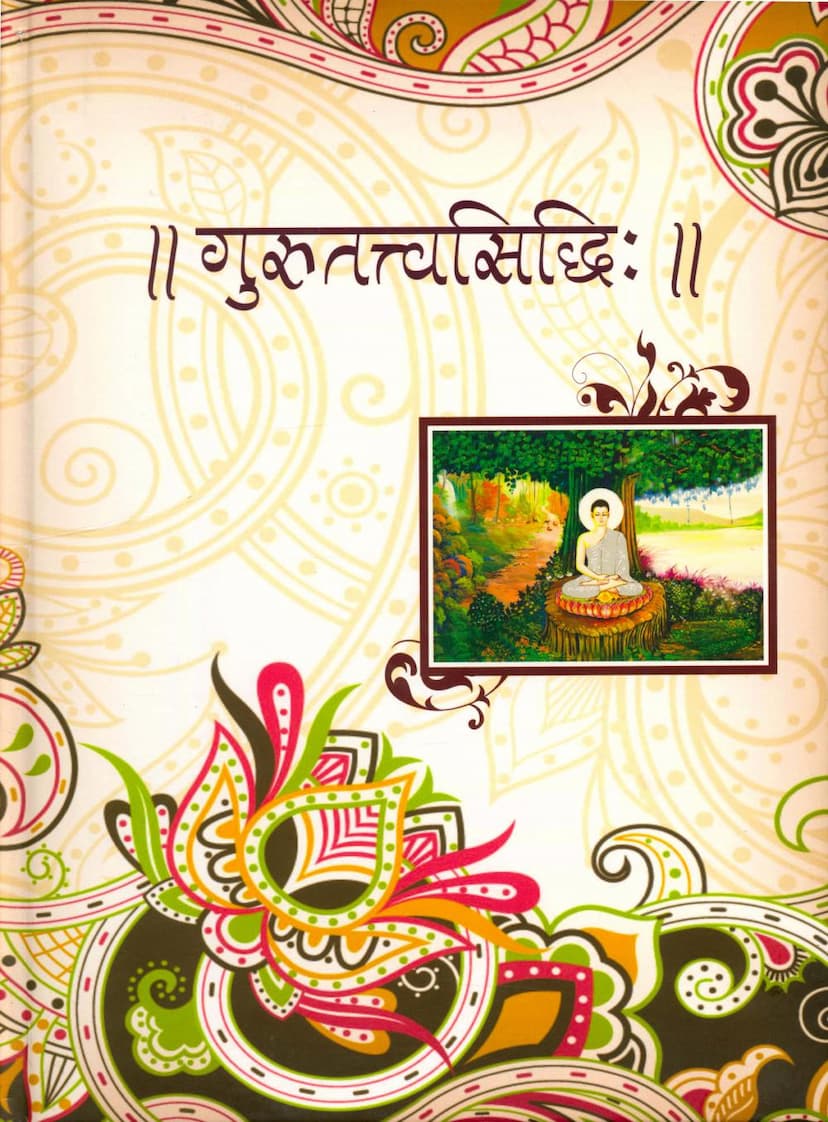Gurutattva Siddhi
Added to library: September 1, 2025

Summary
The book "Gurutattva Siddhi" (गुरुतत्वसिद्धि) authored by Bhavyasundarvijay and published by Jingun Aradhak Trust, is a significant Jain text that delves into the profound concept of the "Guru Tattva" (gurutattva), which translates to the essence or principle of the Guru. The book aims to establish the significance and indispensability of the Guru in the spiritual journey, particularly within the Jain tradition.
Here's a comprehensive summary based on the provided text:
Core Argument and Purpose:
The central purpose of "Gurutattva Siddhi" is to refute the misconception that in the current era (Kaliyug), true spiritual guides (Sadhus) are non-existent or cannot be considered as genuine spiritual preceptors due to perceived flaws or deviations from strict adherence to ascetic principles. The text strongly argues against this viewpoint, asserting that even amidst the challenges of the present time, genuine and virtuous spiritual guides (Sadhus) do exist. It aims to illuminate the profound glory and significance of the Guru Tattva, which is considered essential for attaining liberation.
Key Themes and Content:
-
Reaffirmation of the Guru Tattva: The book emphasizes that Dev (God), Guru (Spiritual Guide), and Dharma (Righteousness/Path) form the Tattva Trayi (three principles) of Jainism. The Guru is crucial as they guide individuals towards understanding and realizing Dev and Dharma. The text stresses that without the sincere acceptance and reverence of the Guru Tattva, even the most rigorous penance and practice may not lead to spiritual welfare and could even result in downfall.
-
Condemnation of Guru Neglect and Slander: A significant portion of the book is dedicated to strongly refuting the idea that all contemporary Sadhus are "pārśvastha" (those who deviate from the path), "aupasarga" (those who cause harm), "kuśīla" (those of bad conduct), or similar categories of misconducted ascetics. The text vehemently criticizes the practice of condemning and disrespecting Sadhus based on perceived flaws or misunderstandings. It highlights the grave sin of "Sangh-āshatnā" (insulting the monastic community) and the dire consequences of slandering the Guru.
-
Glory of Righteous Conduct and Association: The book extols the virtue of righteous conduct and the immense benefits of associating with virtuous individuals (Sat-sang). Conversely, it warns against the destructive influence of bad company ("Kharab Sanga").
-
Relevance of the Guru in All Eras: The text addresses the notion that the principle of the Guru is only relevant in past eras. It counters this by asserting the Guru's role as a guiding light in the current difficult era (Kaliyug) and emphasizes that genuine Gurus are essential for true spiritual progress.
-
Detailed Elucidation of Ascetic Conduct: To provide clarity and context, the book elaborates on the characteristics and classifications of ascetics as described in Jain scriptures. It explains concepts like "pārśvastha," "aupasarga," "kuśīla," "saṁsakta," and "yathāskanda" based on commentaries like those of Acharya Haribhadrasuri. This detailed explanation serves to differentiate between true ascetics and those who may deviate, while still upholding the importance of the Guru.
-
Theological Support and Scriptural Authority: The book extensively quotes and references Jain scriptures, including the Āvaśyaka Niryukti, Upadeśamālā, Nishītha Sūtra, Dharma Ratna Prakaraṇa, Dharma Parīkṣā, Saṁbodha Prakaraṇa, Dravyasaṁgraha, Bṛhatkalpa, Pinda Viśuddhi, and Jīvānusāśana. These references bolster the arguments and provide a strong scriptural basis for the veneration of the Guru.
-
Addressing the "Kāl" (Time) Argument: The text tackles the argument that in the present era, it is difficult to find truly virtuous individuals. It acknowledges that some deviations or minor flaws might exist, but argues that this does not negate the existence of genuine Sadhus or the importance of respecting them. It suggests that even a glimpse of virtue in a Guru should be honored, and the focus should be on their guidance rather than minor imperfections.
-
The Importance of Vandan (Reverence): The book explains the nuances of showing reverence (vandan) to Gurus, emphasizing that even in cases of perceived deviation, the act of showing reverence can be beneficial, especially when done with a pure intention and when true spiritual guides are scarce. However, it also cautions against blind adherence and stresses the need for discerning guidance from qualified Gurus.
-
The "Kāl" (Time) and "Dravya" (Form) Argument: The text addresses the argument that in the current age, the "dravya ling" (physical form of an ascetic) is more prevalent than the "bhāva ling" (inner spiritual qualities). It reiterates the significance of the external form as a marker and the importance of the underlying inner qualities, but ultimately prioritizes the Guru's guidance irrespective of minor external discrepancies, as long as the core principles are upheld.
-
Role of the Scholar and Translator: The text also acknowledges the efforts of the scholar and translator, Muni Yashratnavijayji Maharaj, who has provided a commentary and translation ("Gurugunrashmi") to make the profound Sanskrit text accessible to a wider audience. The research and editorial work by Muni Bhavyasundarvijayji Maharaj are also highlighted.
Overall Message:
"Gurutattva Siddhi" is a defense and glorification of the Guru Tattva in Jainism. It serves as a reminder to uphold faith in the spiritual lineage and to seek guidance from qualified preceptors, refuting the notion that such guidance is unavailable in the current age. The book encourages devotion, respect, and adherence to the teachings of the Guru for the ultimate goal of spiritual upliftment and liberation. It aims to instill a deeper understanding and appreciation for the role of the Guru in guiding souls through the complex paths of spiritual practice.